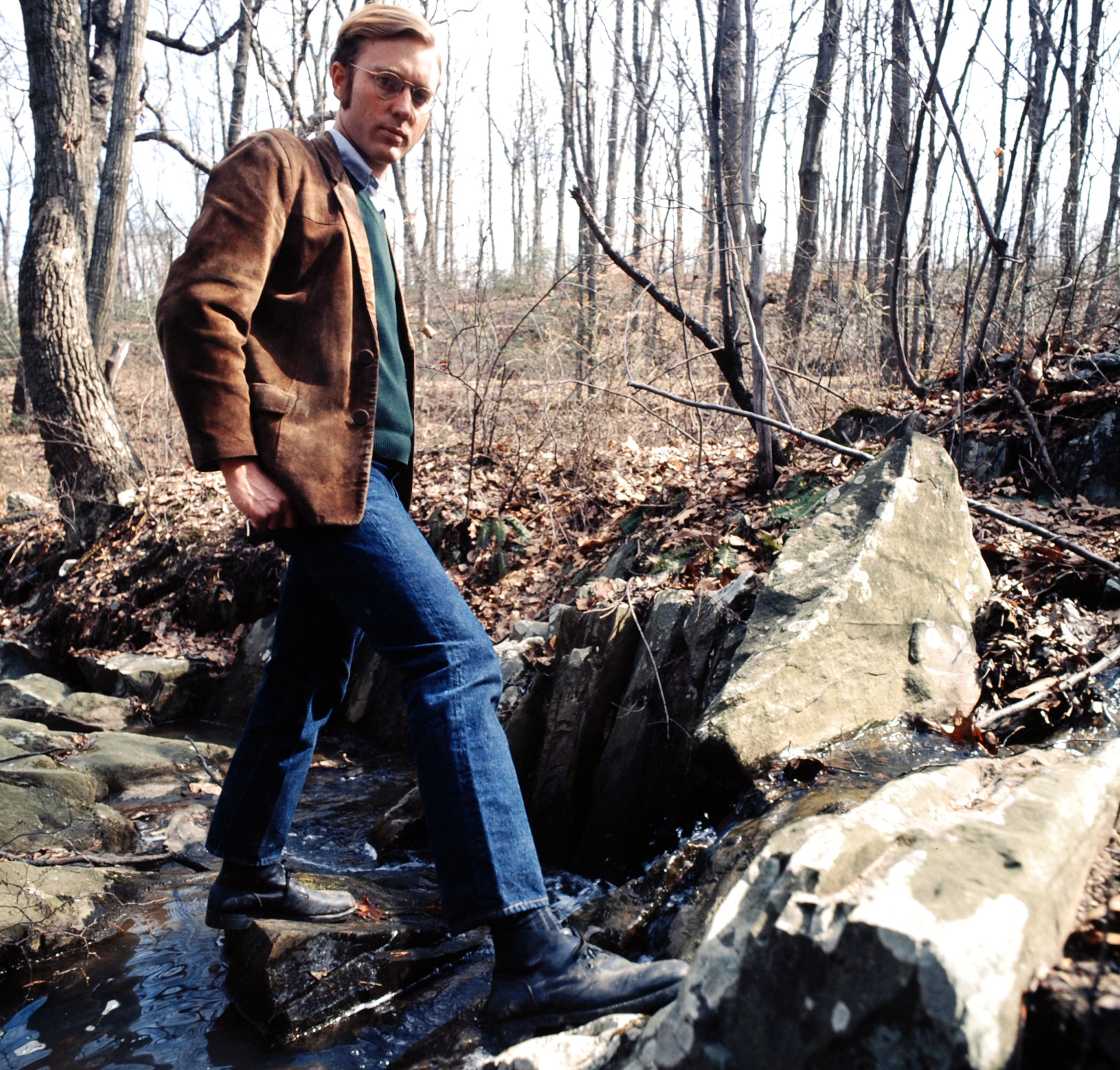
Ever since 20 million people took to American streets on April 22, 1970, over the lack of regulation of corporations’ pollution, Earth Day has been an annual chance to motivate citizens to do something good for the planet. The protests and the movement of which they were part helped lead to the creation that year of the new Environmental Protection Agency (EPA), to do just that, and President Bill Clinton later awarded a Presidential Medal of Freedom to environmentalist and U.S. Senator Gaylord Nelson for leading the charge in founding Earth Day.
Even so, some confusion remains over who founded Earth Day — and whether, as one headline put it, an Earth Day co-founder killed his girlfriend and “composted” her body. That confusion is thanks in part to the photo above, which shows a man standing at the podium for Philadelphia’s 1970 Earth Day observations.
The man in the photo is Ira Einhorn, who in the 1960s and early ’70s was known as an academic expert on the counterculture movement. While teaching at his alma mater, the University of Pennsylvania, he “once reportedly broke out the joints, stripped naked and danced in the classroom,” TIME reported — and at Harvard University he once said “a little more hugging could do Harvard a lot of good.” Despite his unconventional methods, he did have a way with conventional types, and was well known as a smooth-talker who could hook up fellow crusaders with funding for their various initiatives.
Yet a decade later, Einhorn went from being known as a peace-loving hippie to being known as the “Unicorn Killer.”
On Mar. 28, 1979, a homicide detective discovered the body of Helen “Holly” Maddux rotting in a heap of newspaper and Styrofoam packing material in a trunk in Einhorn’s home 18 months after she had gone missing. Einhorn, who had dated Maddux, said it was a set-up, organized by sinister forces due to his antiwar activism. He fled the country just days before his trial was set to begin in 1981, but was tried in absentia and found guilty of murder in 1993. (Unicorn was his nickname because of the German meaning of his surname.) After being on the lam in Europe for more than 15 years, he was extradited to the U.S. to be convicted by a jury of first-degree murder in 2002 and sentenced to life in prison.
But what about the Earth Day connection?
Rumors of his association with Earth Day started quickly; a 1988 book about Einhorn, The Unicorn’s Secret, makes the case that he purposefully spread the idea and quotes him as having told people that he “planned, directed, and emceed the entire event.” In press about the book, Einhorn was called the “organizer” of the event. That descriptor appeared to stick, and he’s still sometimes referred to as a “Master of Ceremonies” of the Philadelphia Earth Day celebration.
When the murder investigation made news, that idea did too; TIME magazine was one of many news outlets that published the above photo and described Einhorn as a founder of Earth Day when covering the case.
In fact, two organizers of Philadelphia’s Earth Day celebration, Edward W. Furia and Austan S. Librach, wrote to TIME after the magazine’s article on the case ran, explaining that in fact — no matter what else Einhorn may have done or said — he wasn’t the founder of Earth Day, and there was no meaningful link between Earth Day and this convicted murderer.
They also explained what was really happening in that photo: “He was not even a member of the committee of 33 men and women who did [organize the event]. The photo you ran was taken during a one-hour period when Einhorn literally occupied the podium, refusing to get off the stage and delaying Senator Edmund Muskie’s keynote speech. It was an unsuccessful attempt — at least at that time — to seize 15 minutes of fame. Now a notorious murder, flight, trial in absentia and foreign capture are giving Einhorn the national media attention he so desperately craved.”
Meet the Organizers of the Very First Earth Day







While that mystery may technically be solved, rumors of a connection between the founding of Earth Day and the crime still linger. (Einhorn’s involvement also led to a secondary debunked conspiracy theory, which is Einhorn chose April 22 for Earth Day because it was Vladimir Lenin’s birthday.) But these days, Earth Day activists are busy trying to debunk conspiracy theories, such as the one that global warming is a hoax, that are perhaps more worrisome than anything the original 1970 organizers could imagine.
More Must-Reads from TIME
- Cybersecurity Experts Are Sounding the Alarm on DOGE
- Meet the 2025 Women of the Year
- The Harsh Truth About Disability Inclusion
- Why Do More Young Adults Have Cancer?
- Colman Domingo Leads With Radical Love
- How to Get Better at Doing Things Alone
- Michelle Zauner Stares Down the Darkness
Write to Olivia B. Waxman at olivia.waxman@time.com